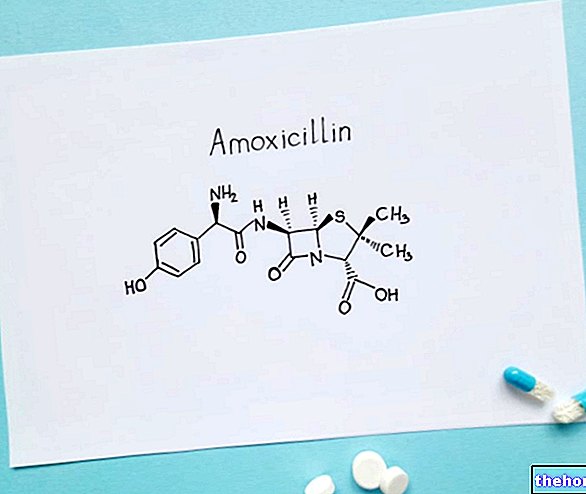
What is SonoVue?
SonoVue is a medicine that contains the active substance sulfur hexafluoride (a gas). It is available in a kit that includes a vial containing gas and powder and a pre-filled syringe containing 5 ml of solvent. When reconstituted in solution, 1 ml of SonoVue contains 8 microliters of sulfur hexafluoride, in the form of "microbubbles" that are created in the liquid suspension.
What is SonoVue used for?
SonoVue is intended for diagnostic use only. It is a contrast agent (i.e. a substance that allows internal structures to be seen in imaging tests). SonoVue is used in diagnostic tests that use ultrasound, because it accentuates the echogenicity of the blood (the ability of the blood to produce an "echo). The medicine is only indicated in patients whose non-contrast examination is not sufficiently accurate. SonoVue is indicated for:
- Echocardiography (ultrasound of the heart). The medicine is used to obtain a clearer view of the heart cavities, especially the left ventricle, in patients with suspected or known coronary artery disease;
- Doppler examination (a diagnostic test that measures the speed of blood flow). SonoVue can be used in the Doppler examination of large vessels, such as those that supply the brain area, those that flow to the head or the main vein that carries the blood to the liver, or microcirculation (smaller blood vessels) such as those present in breast or liver lesions.
The medicine can only be obtained with a prescription.
How is SonoVue used?
SonoVue should only be administered by physicians experienced in ultrasound diagnostic methods. It is administered intravenously (into a vein) before the diagnostic test, at a dose of 2 or 2.4 ml, depending on the test to be performed. A second injection can be made. SonoVue has not been studied in individuals under the age of 18, therefore its use in these patients is not recommended.
How does SonoVue work?
The active substance in SonoVue, sulfur hexafluoride, is a gas that does not dissolve in the blood. When SonoVue is formed into suspension, the gas is trapped in tiny bubbles called "microbubbles". After the injection, the microbubbles circulate in the blood, where they reflect the signal
ultrasound more than other body tissues. This helps improve the results of ultrasound tests, such as echocardiography and Doppler diagnostics. The gas is eliminated from the body through exhaled air.
How has SonoVue been studied?
SonoVue has been studied in six main studies involving a total of 895 patients. Of these, three studies involved echocardiography and three didppler examinations.
The echocardiography studies involved a total of 317 patients and compared the effects of SonoVue with those of another contrast agent and placebo (a dummy treatment).
Doppler studies involved 361 patients with large blood vessel abnormalities and 217 patients with smaller vessel abnormalities. SonoVue was not compared with other medicines in these studies, but the results of tests performed with SonoVue were compared with better diagnostics, such as angiography (an X-ray of blood vessels). The main measure of effectiveness was the sharpness of the blood vessels. images obtained in the exams.
What benefit has SonoVue shown during the studies?
In echocardiography studies, SonoVue was more effective than the comparator and placebo in improving image sharpness of the left ventricle and the endocardial border of the left ventricle.
In Doppler studies, the use of SonoVue to measure blood flow in large blood vessels has improved diagnostic accuracy in examinations of the cerebral arteries, carotids (neck artery) and portal vein (which enters the liver). , but not of the renal arteries. For smaller vessels, SonoVue improved image quality of blood flow in breast and liver lesions. However, improved quality was not observed for lesions involving the pancreas, kidneys, ovaries or prostate gland.
What is the risk associated with SonoVue?
The most common side effects seen with SonoVue (seen in between 1 and 10 out of 100 patients) are headache, nausea, injection site reactions including hematoma (spillage of blood into a tissue), feeling of burning and paraesthesia (abnormal tingling and tingling sensation). For the full list of side effects reported with SonoVue, see the Package Leaflet.
SonoVue must not be used in people who may be hypersensitive (allergic) to sulfur hexafluoride or any of the other ingredients. SonoVue must not be given to:
- patients with recently evolving acute coronary syndrome (symptoms affecting the coronary arteries) or unstable cardiac ischaemia (marked decrease in the normal blood supply to the heart);
- patients with known right-to-left shunts (abnormal blood movements within the heart), patients with severe pulmonary hypertension (high blood pressure in the pulmonary artery, the vessel that connects the heart to the lungs), uncontrolled hypertension and patients with adult respiratory distress syndrome (severe accumulation of fluid in both lungs);
- pregnant or breastfeeding women.
Why has SonoVue been approved?
The Committee for Medicinal Products for Human Use (CHMP) decided that SonoVue's benefits are greater than its risks in increasing the echogenicity (ultrasound contrast) of blood in echocardiography in patients with suspected or known cardiovascular disease, to opacify heart chambers and improve the definition of the left ventricular endocardial border, as well as Doppler diagnostics of large vessels (cerebral arteries, extracranial carotids or peripheral arteries, and portal vein) or microcirculation (liver and breast lesions). recommended the issuing of the marketing authorization for SonoVue.
Other information about SonoVue:
On March 26, 2001, the European Commission issued Bracco International B.V. a "Marketing Authorization" for SonoVue, valid throughout the European Union. The "Marketing Authorization" was renewed on March 26, 2006.
For the complete version of SonoVue EPAR click here.
Last update of this summary: 09-2007
The information on SonoVue - sulfur hexafluoride published on this page may be out of date or incomplete. For a correct use of this information, see the Disclaimer and useful information page.






.jpg)
















-nelle-carni-di-maiale.jpg)




